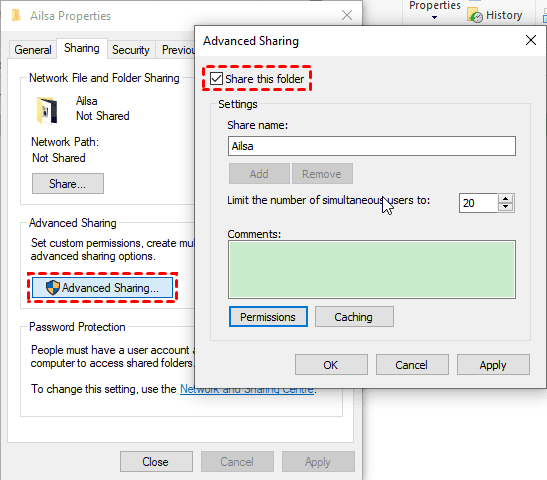

- #Network file synchronization how to#
- #Network file synchronization install#
- #Network file synchronization update#
- #Network file synchronization software#
- #Network file synchronization mac#
syncthingĪfter the initial run, kill the application by pressing CTRL + C.ģ. Before we continue any further, we will need to run Syncthing once to generate config files.įor this guide, we will just be running Syncthing under the pi user. You can retrieve the local IP of your Pi by using the following command. Please note that you should have your Raspberry Pi set up with a static IP address before completing this section.

Our first task is to get the current local IP address assigned to our Raspberry Pi.
#Network file synchronization install#
sudo apt install syncthing Allowing Outside Access to your Syncthing Web Interfaceīy default, we won’t be able to access the Syncthing web interface without being physically on the device.Īs this would make it a frustrating experience for those running a headless Raspberry Pi, we can modify the configuration to allow outside access.ġ.
#Network file synchronization software#
With the package repository now added, all we need to do to install the software is run the following command. Finally, let us install the Syncthing software to our Raspberry Pi. Refresh the package list by running the following command on your device.
#Network file synchronization update#
We need to update the list so that the package manager reads from our newly added source. Before we will install Syncthing from the repository, we need to update the package list. echo "deb syncthing stable" | sudo tee /etc/apt//syncthing.listĥ. With the key added, we can now add the repository itself.įor this Raspberry Pi project, we will be utilizing the stable branch of the Syncthing software.Īdd the repository to our sources list by using the command below. curl -s | gpg -dearmor | sudo tee /usr/share/keyrings/syncthing-archive-keyring.gpg >/dev/nullĤ. These keys are designed to ensure that the packages we are installing have been correctly signed and aren’t coming from an unexpected source.ĭownload and save the keys by using the following command on your Raspberry Pi. Finally, we can store the Syncthing GPG keys in our keyrings directory. We can install the required package by running the command below. Typically this is provided with most operating systems these days, however, trimmed back ones such as Raspberry Pi OS Lite might have it removed. This package allows the package manager to handle sources that operate over the HTTPS protocol. Next, we need to make sure that we have the apt-transport-https package installed. We can update our Raspberry Pi by running the following two commands. Before installing the file synchronization software to our Pi, we should first update the system. To install the software, we will need to add the project’s PGP keys and add its package repository as a potential source.ġ.
#Network file synchronization how to#
In this section, you will learn how to easily install the Syncthing software to your Raspberry Pi using straightforward steps. Installing Syncthing to Your Raspberry Pi We tested this tutorial using a Raspberry Pi 400, running the latest version of Raspberry Pi OS Bullseye. Use the list below to see what parts we utilized when we set up Syncthing on our Raspberry Pi.
#Network file synchronization mac#
Using Syncthing, you can synchronize files from your Windows, Mac OS, or Linux based devices to your Raspberry Pi.Ĭlients for Syncthing are available for each of these operating systems that make it easy to use. If the node fails to provide an allowed certificate, it will not be able to connect, ensuring no dodgy users will easily gain access. This encryption will provide security and privacy, making it difficult for someone to steal the data while it’s in transit.Įach node needs to identify itself by using a strong cryptographic certificate. If you’re on a Dropbox Business team and you’re not sure if your computer is connected to a LAN, ask your admin.Syncthing is a software designed to synchronize files between multiple devices such as the Raspberry Pi in real-time.ĭata is synchronized between nodes using TLS. Enabling LAN sync tells Dropbox to use your LAN to sync files that are stored on your LAN, which may speed up syncing for those files.Ī LAN is more likely to be used between many devices in an office setting than between few devices in a home setting. On Mac, click the Network tab.Ī LAN, local area network, is a wireless or Ethernet connection between computers and other devices in a specific location.


 0 kommentar(er)
0 kommentar(er)
